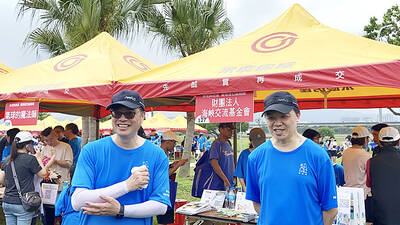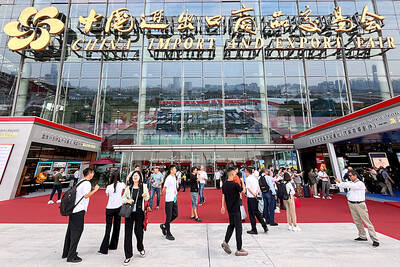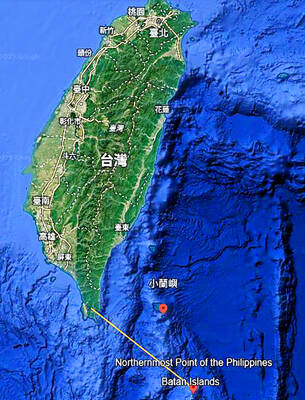The Asian-Pacific Parliamentarians’ Union (APPU) General Assembly yesterday passed a resolution supporting Taiwan’s inclusion in the UN Framework Convention on Climate Change and announced that Taiwan is to host the event next year.
Deputy Legislative Speaker Johnny Chiang (江啟臣) is leading a 14-member cross-party delegation to the general assembly in Tokyo.
The resolution was proposed by the Taiwanese delegation yesterday morning, followed by discussions and voting, the Legislative Yuan said in a statement.

Photo courtesy of the Legislative Yuan via CNA
Climate change should not be a political issue as it impacts beyond national borders, Democratic Progressive Party (DPP) Legislator Wang Ting-yu (王定宇) said, calling on the international community to include Taiwan in the framework.
Taiwan has assisted many Pacific nations in adjusting to climate change with advanced monitoring technology with great results, DPP Legislator Hung Sun-han (洪申翰) said.
Nations should work together to overcome the impacts of climate change, Chinese Nationalist Party (KMT) Legislator Ko Chih-en (柯志恩) said, adding that Taiwan is willing and able to contribute.
The resolution was passed without objection.
On Monday, the delegation met with Yuichiro Tamaki, head of Japan’s Democratic Party for the People, and former Japanese prime minister Taro Aso, who is now vice president of the ruling Liberal Democratic Party, it said.
Tamaki expressed sincere gratitude to Taiwanese for the generous donations they made in the aftermath of the 2011 Tohoku earthquake and tsunami, as well as the earthquake that struck the Noto region of Ishikawa Prefecture in January.
The Democratic Party for the People has always valued its relations with Taiwan as it continues to pursue foreign and economic policies that are pragmatic and help enhance security, he said.
People-to-people ties are the bedrock for diplomatic engagements between Japan and Taiwan, he said, adding that he hopes to see relations further improved through interaction with the delegation.
Aso said that heightened tensions across the Taiwan Strait have become a matter of great concern to the US and other nations in the region, such as Australia, Japan, South Korea and India.
China would need to rely on its navy if it were to invade Taiwan, but it has little experience in naval warfare in modern history, while Japan’s navy is its main combat force, he said.
Multiple aircraft carriers have been deployed in the Asia-Pacific region as part of the US-Japan alliance to maintain peace in the region, he added.
He urged Japan to work closely with the US, Philippines, South Korea and Australia to enhance deterrence, while encouraging Japan’s young lawmakers to foster closer ties and communication channels with Taiwan’s political parties, which would facilitate cooperation in a possible Taiwan contingency.
Following the meeting, the delegation attended a trilateral dialogue with lawmakers from Japan and Palau to discuss cooperation on economic, tourism and climate issues, as well as exchange views on energy security and food shortages.
Japanese Representative Keiji Furuya, who is also chairman of the Japan-Republic of China Diet Members’ Consultative Council, and other council members are also to meet with the delegation, the Nihon Keizai Shimbun reported on Monday.

SECURITY: As China is ‘reshaping’ Hong Kong’s population, Taiwan must raise the eligibility threshold for applications from Hong Kongers, Chiu Chui-cheng said When Hong Kong and Macau citizens apply for residency in Taiwan, it would be under a new category that includes a “national security observation period,” Mainland Affairs Council (MAC) Minister Chiu Chui-cheng (邱垂正) said yesterday. President William Lai (賴清德) on March 13 announced 17 strategies to counter China’s aggression toward Taiwan, including incorporating national security considerations into the review process for residency applications from Hong Kong and Macau citizens. The situation in Hong Kong is constantly changing, Chiu said to media yesterday on the sidelines of the Taipei Technology Run hosted by the Taipei Neihu Technology Park Development Association. With

CARROT AND STICK: While unrelenting in its military threats, China attracted nearly 40,000 Taiwanese to over 400 business events last year Nearly 40,000 Taiwanese last year joined industry events in China, such as conferences and trade fairs, supported by the Chinese government, a study showed yesterday, as Beijing ramps up a charm offensive toward Taipei alongside military pressure. China has long taken a carrot-and-stick approach to Taiwan, threatening it with the prospect of military action while reaching out to those it believes are amenable to Beijing’s point of view. Taiwanese security officials are wary of what they see as Beijing’s influence campaigns to sway public opinion after Taipei and Beijing gradually resumed travel links halted by the COVID-19 pandemic, but the scale of

A US Marine Corps regiment equipped with Naval Strike Missiles (NSM) is set to participate in the upcoming Balikatan 25 exercise in the Luzon Strait, marking the system’s first-ever deployment in the Philippines. US and Philippine officials have separately confirmed that the Navy Marine Expeditionary Ship Interdiction System (NMESIS) — the mobile launch platform for the Naval Strike Missile — would take part in the joint exercise. The missiles are being deployed to “a strategic first island chain chokepoint” in the waters between Taiwan proper and the Philippines, US-based Naval News reported. “The Luzon Strait and Bashi Channel represent a critical access

Pope Francis is be laid to rest on Saturday after lying in state for three days in St Peter’s Basilica, where the faithful are expected to flock to pay their respects to history’s first Latin American pontiff. The cardinals met yesterday in the Vatican’s synod hall to chart the next steps before a conclave begins to choose Francis’ successor, as condolences poured in from around the world. According to current norms, the conclave must begin between May 5 and 10. The cardinals set the funeral for Saturday at 10am in St Peter’s Square, to be celebrated by the dean of the College